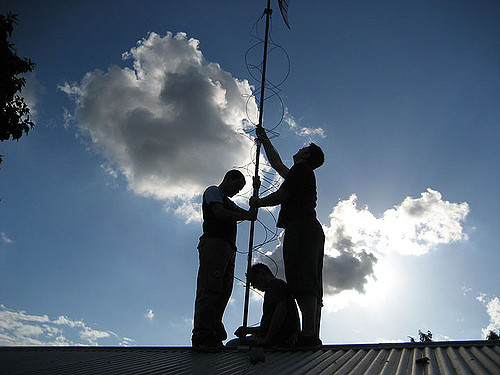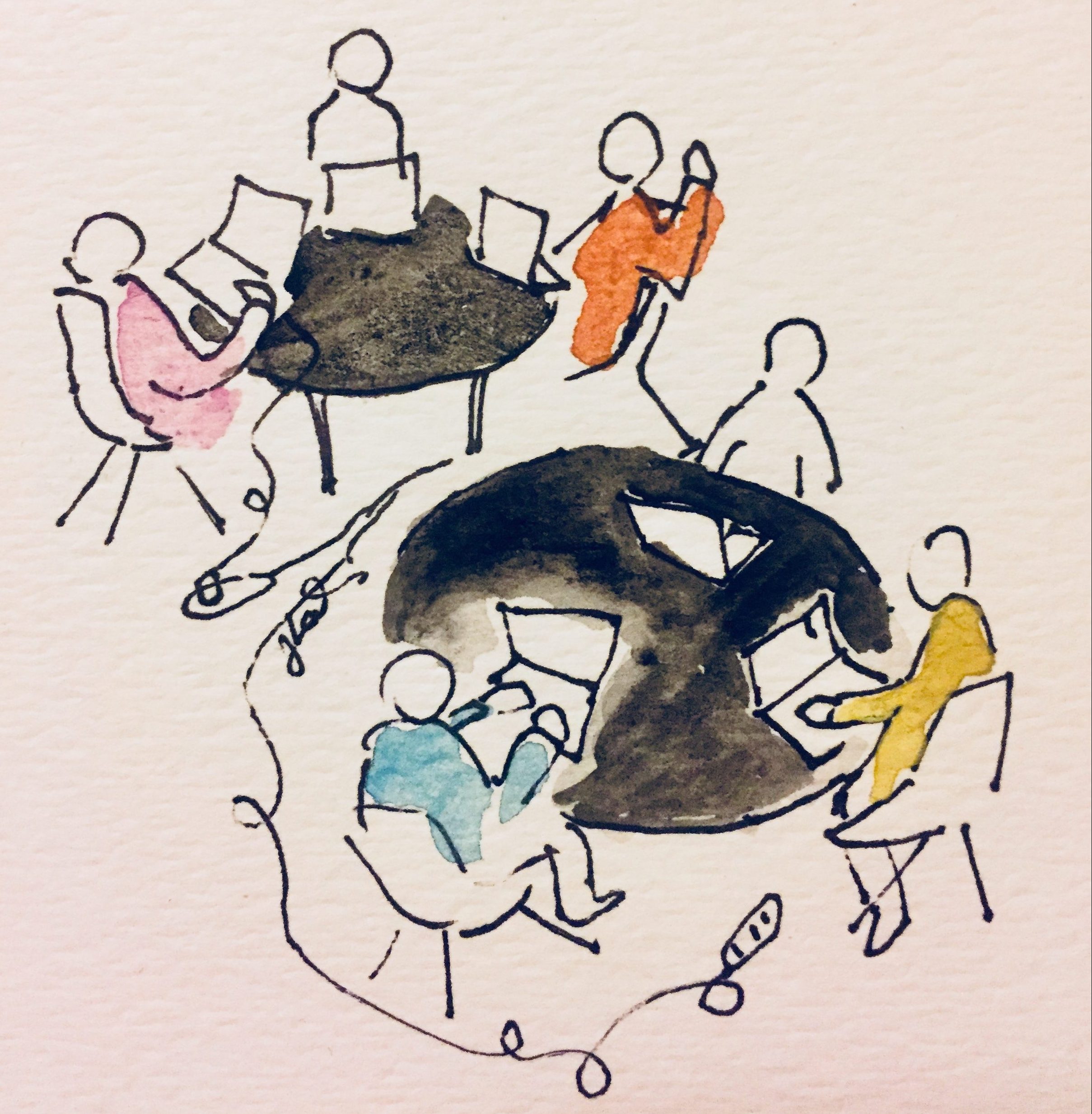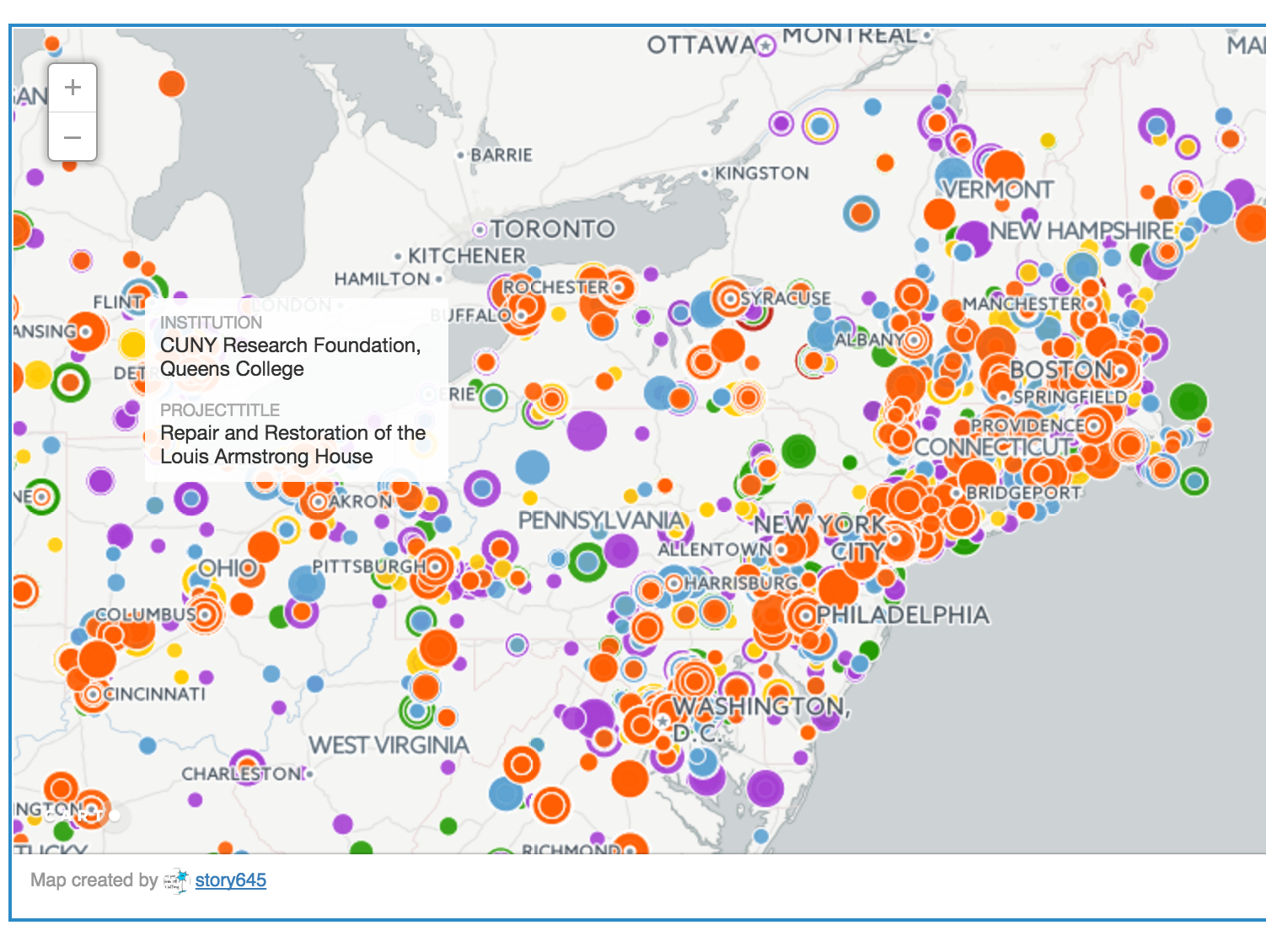
Introduction
This is Part 2 of a two-part blog post series exploring the efforts of 3 urban-based community wireless networks (CWNs) – NYC Mesh, Equitable Internet Initiative (Detroit), and PeoplesOpen.net (Oakland). The aims of these grassroots efforts are provide neighbors with internet access.
Part 1 explored the expanded notions of access and inclusion these CWNs employ in building out their community and technical networks. This inquiry ultimately revealed an inherent reworking of social, material, economic and political relations by CWNs in ways that challenge the dominant capitalocentric relations of power that govern internet access more broadly.
“In sum, CWNs’ create a new digital economy that is shared, co-owned, and managed by members of the CWN. They employ non-discriminatory definitions of “who” can be a community member. They rely on and adapt the built environment in building their community. Their existence as a community brings into being an example of a community enacting internet access as a human right.”
Part 2 continues this inquiry, further exploring the potentiality of CWNs through the active reworking of relationships and relationship-building processes undertaken by one Detroit-based CWN – the Equitable Internet Initiative.
Pt 2: Community Wireless Networks: “Access” as Digital Insurgency
Detroit’s centrality to the technological revolution of the late 19th C/early 20th C seems indisputable. Nicknamed “Motor City”, Detroit was famous for Henry Ford’s first automobile test drive and the assembly line which revolutionized manufacturing broadly. Moreover, the city was home to the Big Three – Ford, General Motors, and Chrysler – which were considered to be the most successful auto industries in the world at the time (1).
In contrast, Detroit seems left behind by the technological revolution underway today. According to a 2015 report by the FCC, 40% of Detroit residents lack broadband access entirely, 57% lack hardline or fixed access (meaning they can access from mobile devices and available WI-FI networks), and 70% of school-aged children have no Internet access at home. At sixty-three percent, these trends are more pronounced for lower income households; and yet cost is only part of the issue (2). Lack of access is also the result of a lack of interest and effort by Big Telecom companies who have abandoned dark fiber optic cables that could supply access to many (3). To the extent that internet access is increasingly vital to managing, navigating and participating in life in the 21st C – including completing class assignments and employment tasks – these trends threaten old and new generations of Detroiters while compounding historic and persisting class and racial inequality (4).
It’s these trends that led the FCC to conclude that Detroit’s digital divide is among the most severe in the country. However, a closer look at community-based responses suggests that Detroit residents are once again – and maybe more so – leading the way.
The Equitable Internet Initiative (EII) is one of multiple projects that fall under the umbrella of the Detroit Community Technology Project (DCTP), which in turn is derived from the larger digital justice efforts of Allied Media Projects. DCTP’s other initiatives to address the digital divide include Digital Stewards Training, CassCo Wifi, and the Data Justice Campaign.
DCTP describes their approach as “community technology”; a concept that aims to recognize “the goal of restoring relationships and healing neighborhoods” through providing digital access and literacy (11). EII specifically is the realization of DCTP’s aims “to use and develop technology rooted in community needs that strengthens human connections to each other and the planet” and “…work towards demystifying technology and expanding digital literacy in our communities” (DCTP.org). Underpinning this is the understanding that technology is a tool that can be wielded to enhance existing community resiliency, preservation, and growth efforts. As DCTP notes in their “Teaching Community Technology Handbook”: “Technology and the internet have the ability to transform our communities, assist in economic development and help residents understand and utilize the power they already have. We share these with poor and marginalized communities to help them realize their power in shaping the future in just, creative and collaborative ways” (5).
In realizing these aims, DCTP partnered with three existing “community anchor organizations” located in the neighborhood areas of interest. Areas were selected based on measures of exclusion like “their comparatively low income and educational levels in contrast to the Greater Downtown area”. Rather than initiating separate programming, anchor organizations expanded their programing to include the programs designed by DCTP to implement, maintain, and grow EII in their area. The programs include the Digital Stewards program that “trains neighborhood leaders in the technical and community organizing skills necessary to redistribute Gigabit Internet connections and bring their communities online” and the Next Gen Apps program that “train[s] high school and middle school youth in web development skills for the Gigabit environment”.
Digital stewards interface directly with community members in building out the physical infrastructure of EII in their neighborhood. They are also involved in getting neighbors set up and online, pointing to resources, and answering questions. EII’s Digital Stewards program highlights the deeper meaning “peer-to-peer” can have in CWNs; usually used to describe the mesh network technology itself, here it is embodied in the work of the Digital Stewards. Similarly, the Next Gen Apps Program, through which youth have built apps that “track pollution data in the city’s North End, map community resources,” and more, brings young people together in physical space to build digital resources that can serve the needs and interests of the community (6).
Through a closer look at DCTP’s approach, we see that their ultimate commitment is not necessarily to broadband access, but to community building and community-capacity building. Said another way, the community remains at the center of the initiative, while broadband access is positioned as a tool that can be – and perhaps must be in the 21st C – wielded by the community to further their needs and interests.
This is an important departure from the municipal and/or corporate-driven efforts, and even those of other CWNs. In contrast, the end goal is not to provide broadband access per se; instead, access is seen as means to the greater goals of community survival and thriving. Even if we understand municipal efforts to provide broadband as a means to providing individuals with access towards the ends of more full participation in life in the 21st C, EII’s contrasting focus on the community is distinct and noteworthy.
These particularities situate DCTP’s efforts within the legacies of community economics that have been taken up by and sustained marginalized communities longstanding, manifesting as mutual aid societies, housing and worker cooperatives and more (7). Commonly, including DCTP’s efforts, this community-centered infrastructure is evidence of and the manifestation of fundamentally different ontological and epistemological commitments – commitments that are rooted not in the competitive, atomized, and individualized ideals that undergird capitalocentric relations, but in the cooperative, community-centric ideals.
In this way, CWNs and EII specifically represent a digital insurgency. Their foundational reworking of access provision calls into question the logics upon which the dominant mode of internet provision operates while pointing to promising alternatives. As the public conversation around data security and ownership continues to evolve, and as we learn more about the extent to which our participation in digital environments is being used to control rather than enhance our everyday lives and quality of life overall, and as we learn more about how the vulnerability of already-vulnerable populations is exacerbated and deepened rather than alleviated by digital environments and tools as they exist today, identifying these alternatives and the disruptions they provoke – how and why – becomes evermore important.
REFERENCES
(1) Motor City : The History of the Auto Industry in Detroit, by Edmond Farnell, for The Dealer Alternative Parts Geek: https://www.partsgeek.com/mmparts/motor_city_the_history_of_the_auto_industry_in_detroit.html
(2) Detroit’s Broadband Infrastructure, Connectivity and Adoption Issues, a presentation by Mark Hudson of Rocket Filber, http://transition.fcc.gov/c2h/10282015/marc-hudson-presentation-10282015.pd; Detroit’s Digital Divide, FCC, by Tom Wheeler, FCC Chairman and Mignon Clyburn, Commissioner: https://www.fcc.gov/news-events/blog/2015/10/27/detroits-digital-divide
(3) Ignored By Big Telecom, Detroit’s Marginalized Communities Are Building Their Own Internet, by Kaleigh Rodgers, Medium, Nov 16 2017: https://motherboard.vice.com/en_us/article/kz3xyz/detroit-mesh-network
(4) Trapped In An Internet Desert, Detroit Teens Struggle To Stay Online, by Abbey-Lambertz, 2018 HuffPost, Mar 29, 2018: https://www.huffpost.com/entry/detroit-internet-teens_n_5abbfb34e4b06409775cc5ea
(5) Introducing the “Teaching Community Technology Handbook”, words by Detroit Community Technology Project, Nov. 16, 2016: https://www.alliedmedia.org/news/2016/11/16/introducing-“teaching-community-technology-handbook; Teaching Community Technology Handbook, by the Detroit Community Technology Project, 2016: http://detroitcommunitytech.org/?q=teachcommtech
(6) A Look Back at EII’s Whirlwind Year, words by DCTP, February 28, 2018: https://www.alliedmedia.org/news/2018/02/28/look-back-eiis-whirlwind-year
(7) Collective Courage: A History of African American Cooperative Economic Thought and Practice, by Jessica Gordon Nembhard, 1st printed 2014 by the University of Pennsylvania Press, University Park, PA: http://www.psupress.org/books/titles/978-0-271-06216-7.html




